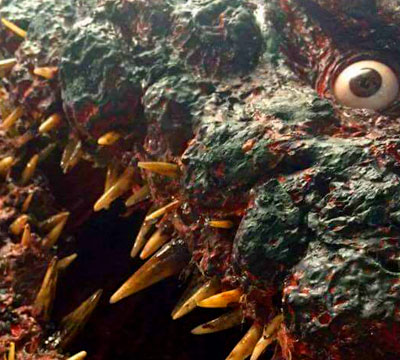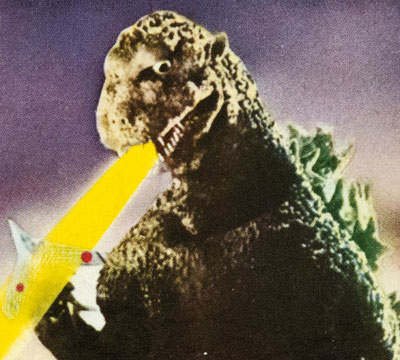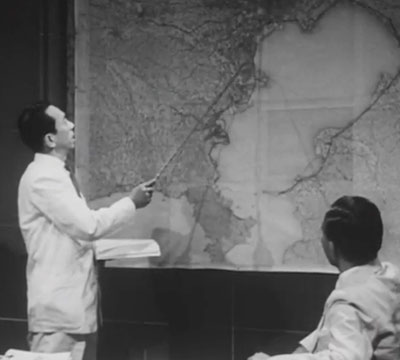10.8.16
This morning I woke up with a deeper understanding of the human situation as I considered the chaos of American politics and the destruction of Hurricane Matthew pounding the east coast of the US. Throughout life we all experience division, disorder, and disaster. Much of life is spent pondering why these things happen. I found the genius of Monster movies in that they help us to cope by transforming our challenges into monsters that we conquer by the movie’s end. In the process, they have a way of telling us more about ourselves and the human reality through the metaphor of fictitious monsters. This Shin Godzilla does and does well. The human dilemma is on full display and captured through the Godzilla. If we look carefully, Shin Godzilla reveals the source of our problems and offers a better way to solve our problems. A great film should make us see our problems, feel discomfortable, experience disappointment, encourage us to take our problems head on, and offer solutions. For this reason I love this most about Shin Godzilla.
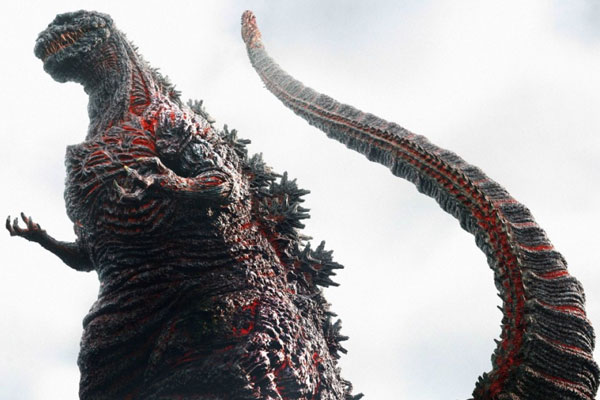
Godzilla is normally understood as a metaphor for the nuclear bomb or a natural disaster. Both are right but I want to argue that Godzilla is even more and the mystery is right beneath its skin. What we will find is an inconvenient truth but I believe the most important.
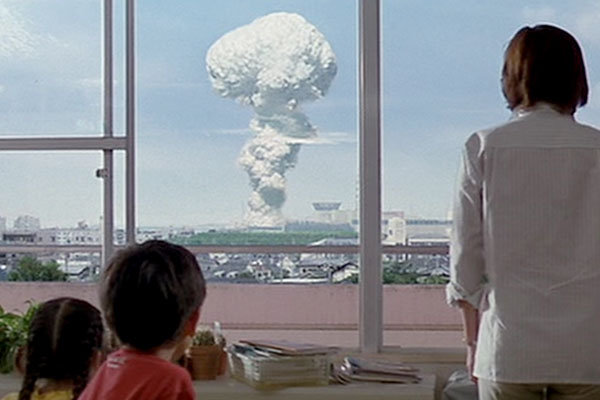
Over the years Godzilla movies have put the problem right before our eyes but we miss it. Since Godzilla first appeared on the silver screen in 1954, we don’t take Godzilla serious and don’t expect it tackle serious issues. This changes with Shin Godzilla. It’s not the Godzilla we often remember and imagine.
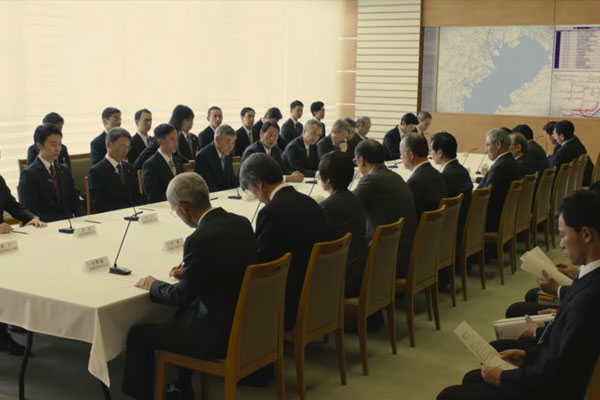
In Shin Godzilla, filmmaker Anno Hideaki shows us the good, the bad, and the ugly of the human collective. The dysfunctional government is front and center. The Japanese government is hindered by its hierarchy, bureaucracy, and the cultural burden of shame for any individual that doesn’t conform to the group. We see them mishandle the crisis from the beginning but a smaller group emerges unshackled by what binds to find a way to overcome Shin Godzilla in the end.
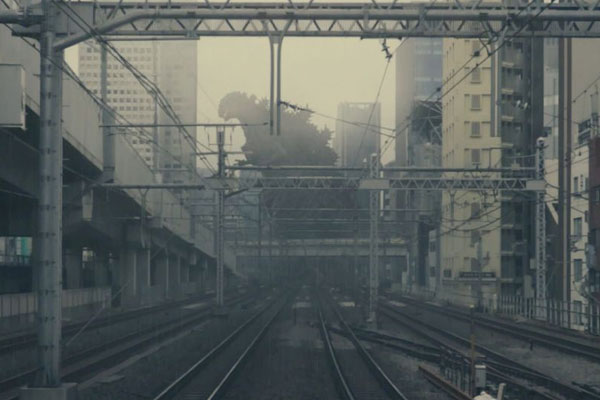
Don’t miss the meaning and only see the monster. Shin Godzilla is clearly a metaphor for the 311 Japan earthquake, tsunami, and Fukushima nuclear disaster. For some moviegoers outside of Japan 311 may be a long-forgotten memory. But in reality its effects are ongoing and continues to pose a threat. Human error was to blame for the nuclear meltdown at the Daiichi nuclear reactors in Fukushima. The government and TEPCO, the plant’s owner, mishandled the nuclear crisis and misinformed the public. They have received harsh criticism and protest and rightfully so.
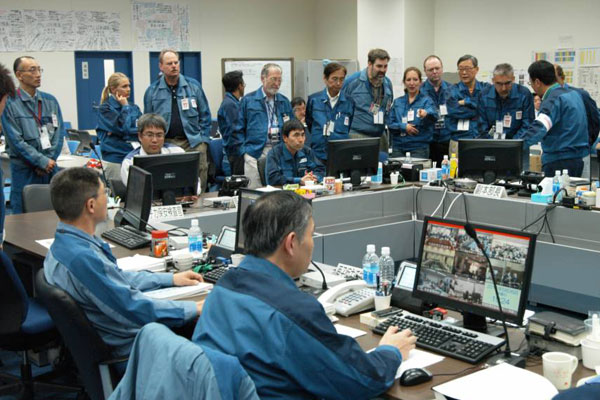
When we forget about the human cause of such crisis we are bound to repeat them. Too often the real problems go unresolved and unaddressed out of fear, coverup, and complacency. And the problem is just waiting to rear its ugly head in the not-so-distant future. Shin Godzilla goes back to 311 and points the finger at the problem. So like any natural disaster or man-made crisis we ask from whence does Shin Godzilla come? What has given birth to such a terrible monster? What chain of reactions brought this horror?
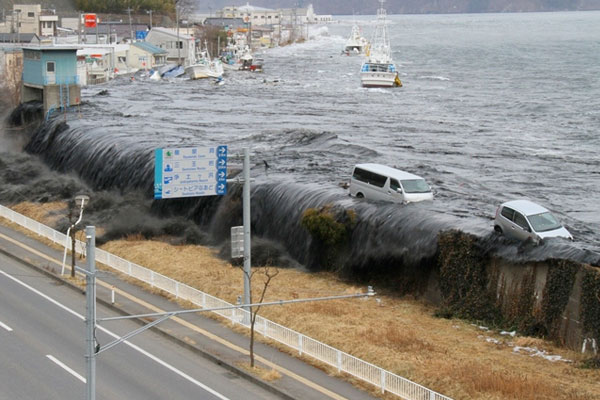
In the film, it is clear that the evolution of Shin Godzilla represents the unfolding events of 311 moving from the earthquake to the tsunami to the meltdown of the Fukushima Daiichi nuclear plant. Nearly 20,000 lives were lost on 311. As in reality so in fiction. Godzilla, like all monsters, has its victims. The truth is right before our eyes and right beneath its skin. There we will find our victims.
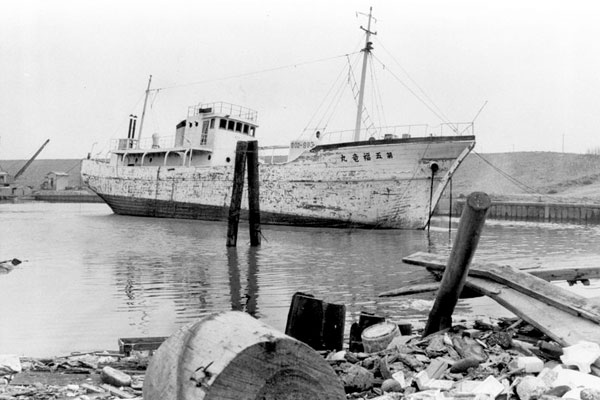
In the 1954 film, Dr Yamane suggests that Godzilla was a prehistoric dinosaur exposed to the radiation of the H-bomb. There’s no Godzilla without the H-bomb. There’s no H-bomb without human war. Now let’s go further and draw the unmistakable parallel the 1954 film intended between its fictitious monster and the real human victims of its tragic historical context. Godzilla represents the human victims of the Japanese fishing boat, the Lucky Dragon No 5, who in March of 1954 were covered in the fallout of the H-bomb tests in the Bikini Atoll by the United States. The metaphor of the monster is clear. Godzilla represents those human victims. And it itself is a victim. But the victim will make victims. The monster like the bomb is unleashed doing what had been done to it. Like a nuclear bomb the monster takes the lives of both the guilty and the innocent.
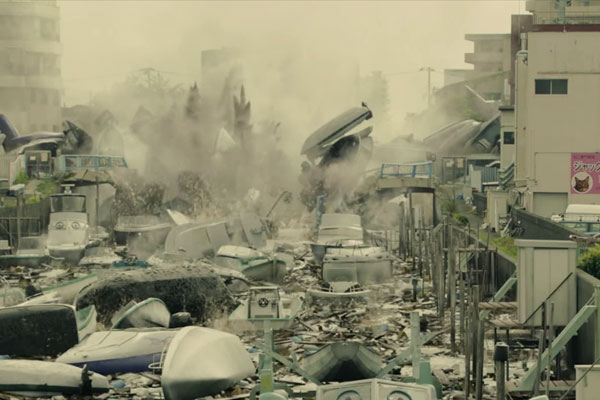
In Shin Godzilla, Godzilla is not far from nuclear origins. Godzilla is not born out of the dropping of a nuclear bomb but rather out of nuclear waste dumped in the sea. Godzilla, like most monsters if not all, is a monster that humans make directly or indirectly. Professor Goro Maki warned that such a creature would appear. Perhaps depressed and disheartened, he commits suicide jumping from his small pleasure boat, the “Glory Maru,” in Yokohama Bay. But he leaves his research with the warning, “Do as you like.” But his warning went unheeded. Shortly after his boat is discovered, Shin Godzilla (Form A) appears in the bay. Later in the film, we learn it was created when a marine animal consumes nuclear waste dumped by the US in the sea. Once again nuclear waste and victims lie at the origin of Godzilla.
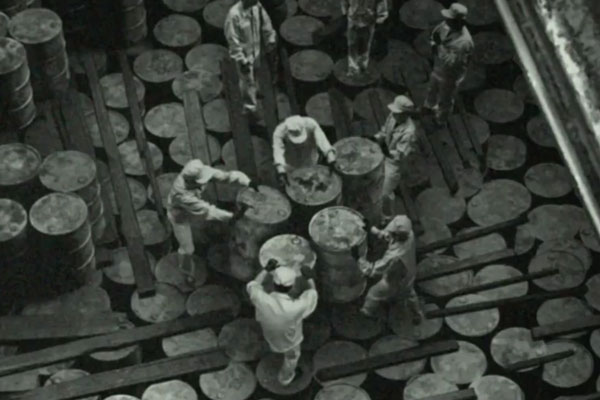
In the final moments of the film, the filmmakers fix our eyes upon human like creatures emerging from the tail of Shin Godzilla. How did that happen? Again herein the mystery is revealed. Is Godzilla part human? I would say yes. I would argue Godzilla has the DNA of the professor. Start from the end and finish at the beginning and there lies human victims born out of human violence and harm. Underneath the beast’s skin lies our victims.
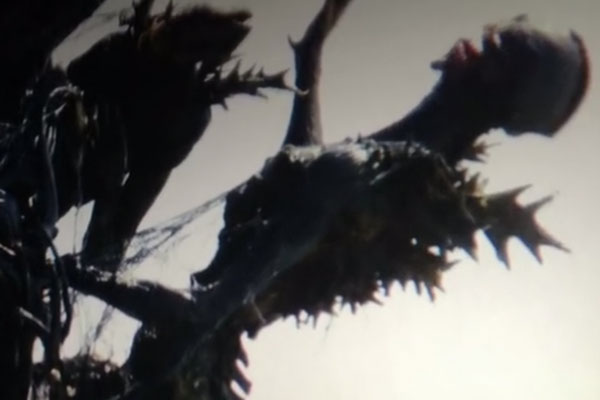
Simply put, we make “Godzilla.” The violence and harm that often threatens us is usually the results of human rivalry and violence and war. Godzilla is a metaphor for what becomes of others when we do harm and violence. We are the monster makers. We make the monsters that seek to destroy us. And in the end, perhaps we are monsters that give birth to more.
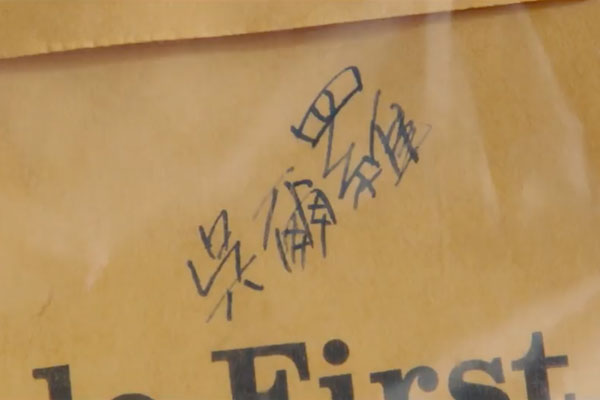
Dr Maki’s warning suggests that when we do violence or we disposed of what would harm us in others places, we have the recipe for making monsters. We must see the connection between our choice to do violence and harm with the damning consequences. We must see our victims before they become monsters. We don’t see how we make our enemies. And we don’t see how we become monsters when we engage in the violence we say comes from our monsters. We must see the uncertain future that our violence creates. Like monsters we too will meet our end if we don’t heed the warnings.
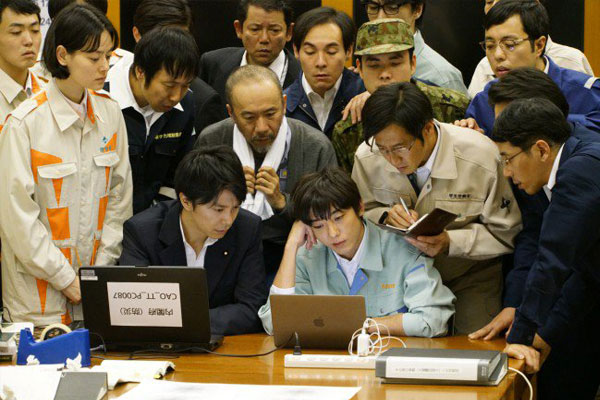
When the Japanese Self-Defense Force was unable to halt and defeat Godzilla using the traditional military violence, Rando Yaguchi and his team, established upon a horizontal hierarchy, found a way. This team was a band of misfits and outsiders who were unafraid to stand out and to criticize the group. Each had its specialty and respected contribution. When they suffered loses they survivors mourned and persisted in their memory. In reality, such a group are the pool of people that the majority will deem expendable in order to preserve its way of doing things. They themselves were willing to sacrifice their lives on behalf of the group in order to defeat Godzilla. Yaguchi’s group strongly resembles the Fukushima Fifty, who sacrificed and stayed behind to oversee the crippled nuclear reactors. The parallels between Shin Godzilla and Fukushima don’t end with the small group:
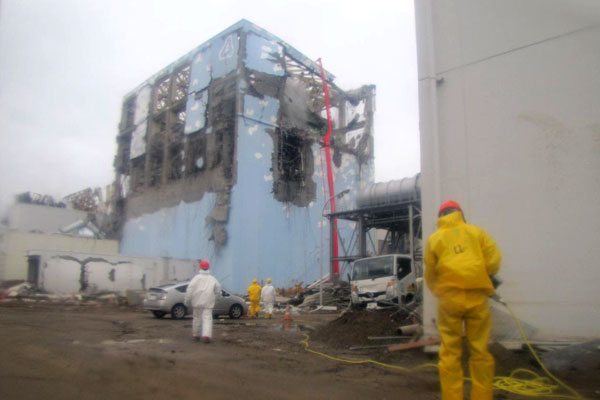
In the early events at Fukushima, there were proposals to bury the reactors by dropping bombs. Early in the film, the Self-Defense Force gives Godzilla its best shot but in a losing effort. In the end, Godzilla is temporarily buried beneath buildings surrounding Tokyo Station. During 311, Japan’s Prime Minister considered evacuating Tokyo in the early moments of meltdown. In Shin Godzilla, Tokyo is evacuated preparing the way for the the US to once again drop a thermonuclear bomb on Japan. To examine the Fukushima reactors and Godzilla unmanned drones are deployed. In both cases the drones quickly broke down. The Yashiori plan, like the Fukushima ice wall plan, sought to halt the radiation spewing out of Godzilla by freezing it. They devised a plan to pump a special coagulant into it using pumping vehicles like those used to pump water into the reactors at Fukushima. And finally, like the Fukushima reactors, Godzilla was a monster they had to live with. Art imitates life. Fiction imitates reality.
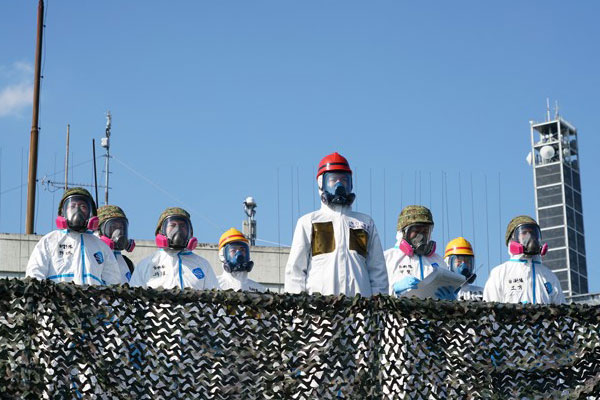
Yaguchi’s team came up a less violent and more effective way to deal with Godzilla. In the end, Japan with its trains, trucks, pumps, and people stop Godzilla rather than the Self-Defense Force and the US bombs and bombers. And maybe this is the most important message from the film. Shin Godzilla shows a better way of dealing with our own monsters. We don’t need jets, tanks, and bombs, but rather clear heads to see things for what they really are. We need determination to solve our problems without resorting to violence. They put Shin Godzilla to sleep just in time before more monsters emerged from its tail. There would be no monsters if we don’t make them.
